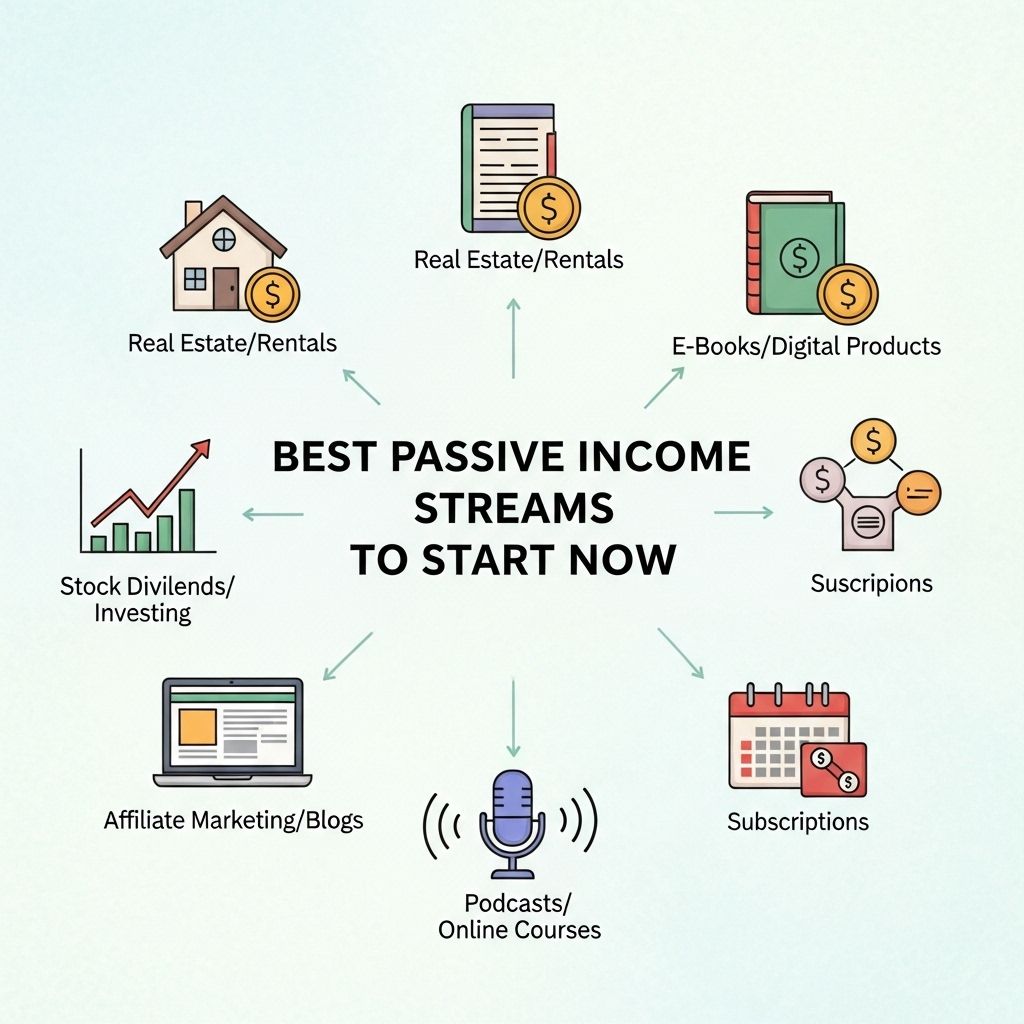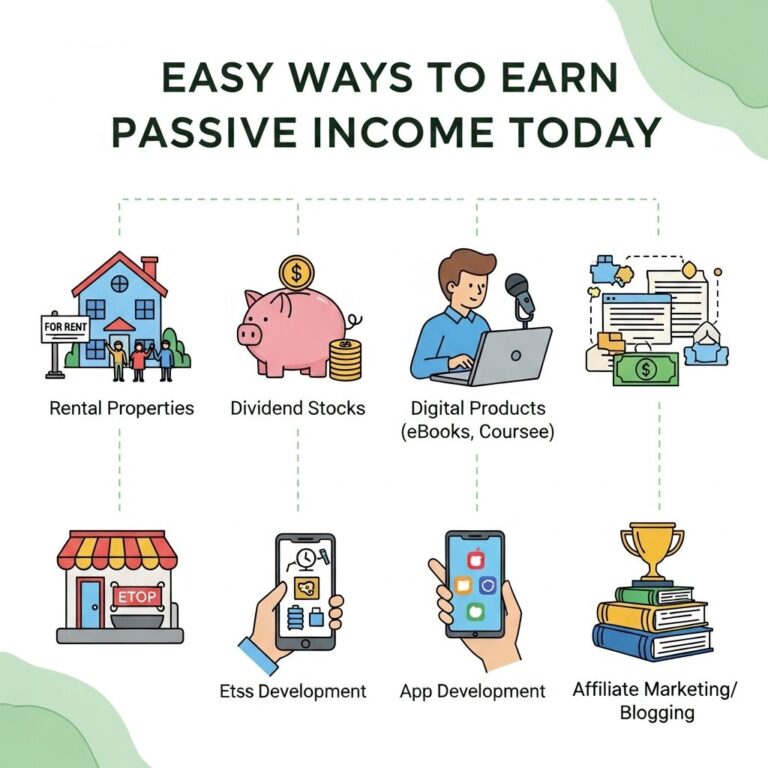In an increasingly digital world, the concept of earning without actively working has gained immense popularity. Many individuals seek financial freedom and a stable income without the constraints of a traditional 9-to-5 job. Passive income streams offer a viable solution, allowing you to earn money with minimal ongoing effort. This article explores various passive income opportunities that you can start today, each with its own set of benefits and challenges.
Table of Contents
Understanding Passive Income
Passive income refers to revenue earned with little to no effort on the part of the recipient. This income stream typically requires an initial investment of time, effort, or capital but pays off in the long run. The beauty of passive income is its potential to generate revenue without the need for constant oversight or active participation.
Types of Passive Income Streams
1. Real Estate Investments
Investing in real estate has long been a favored method to generate passive income. Here are some common forms:
- Rental Properties: Purchase properties and rent them out to tenants.
- Real Estate Investment Trusts (REITs): Invest in companies that own or finance income-producing real estate.
- Vacation Rentals: List properties on platforms like Airbnb for short-term rentals.
2. Dividend Stocks
Investing in dividend-paying stocks can provide a steady income stream. Here’s how to get started:
- Research and select stocks known for consistent dividends.
- Consider establishing a dividend reinvestment plan (DRIP) to maximize growth.
- Monitor your portfolio and adjust as necessary to maintain a steady income.
3. Peer-to-Peer Lending
This innovative approach connects lenders directly with borrowers through online platforms. Key points include:
- Choose reputable platforms like LendingClub or Prosper.
- Assess risk levels associated with different borrowers.
- Earn interest as borrowers repay their loans.
Setting Up Your Passive Income Streams
1. Define Your Goals
Before diving into passive income opportunities, clearly define your financial goals. Consider the following:
- How much income do you want to generate?
- What level of risk are you comfortable with?
- How much time and capital can you invest upfront?
2. Research and Education
Knowledge is power, especially in investment realms. Take the time to educate yourself on various options:
- Read books and articles on passive income strategies.
- Join online forums and communities to engage with like-minded individuals.
- Attend workshops or webinars to gain insights from experts.
3. Start Small and Scale
It’s wise to start small and gradually scale your investments. Begin with:
- A single rental property or a small stock investment.
- Small amounts in peer-to-peer lending.
- Low-cost index funds or ETFs focusing on dividends.
Analyzing Potential Income Streams
Evaluating the viability of potential passive income streams is crucial. Consider the following factors:
| Income Stream | Initial Investment | Time to Profit | Risk Level |
|---|---|---|---|
| Rental Properties | High | 6-12 months | Medium |
| Dividend Stocks | Medium | Immediate | Low |
| Peer-to-Peer Lending | Low | 1-3 months | Medium |
Tax Implications of Passive Income
Understanding the tax implications of your passive income streams is essential for financial planning. Key considerations include:
- Tax Rates: Different income types may be taxed at varying rates.
- Deductible Expenses: You can often deduct expenses related to maintaining your passive income sources.
- 1031 Exchange: In real estate, this allows you to defer taxes on the exchange of investment properties.
Maintaining Your Passive Income Streams
1. Regular Monitoring
While passive income doesn’t require constant oversight, it’s important to routinely check on your investments:
- Review your rental property’s condition and tenant satisfaction.
- Monitor stock performance and economic trends affecting dividends.
- Keep track of borrower repayments in peer-to-peer lending.
2. Adjust as Necessary
Be prepared to adjust your strategy based on performance:
- Reinvest dividends to accelerate growth.
- Consider moving funds from underperforming assets.
- Explore new investment opportunities as they arise.
Conclusion
Passive income streams represent a powerful way to achieve financial independence. By leveraging various investment opportunities, you can create a sustainable income that supports your lifestyle while freeing up your time. Remember, the key is to start small, educate yourself, and scale your efforts as you gain confidence and expertise. With the right approach, you can successfully build a portfolio of passive income streams that work for you.
FAQ
What are the best passive income streams to start in 2023?
Some of the best passive income streams to consider in 2023 include real estate investing, dividend stocks, peer-to-peer lending, creating an online course, and investing in index funds.
How much money do I need to start earning passive income?
The amount of money needed to start earning passive income varies by method. For instance, real estate may require a larger initial investment, while online courses or affiliate marketing can be started with minimal costs.
Is passive income really ‘passive’?
While passive income can generate revenue with little ongoing effort, most streams require upfront work or investment, and may need occasional management or updates to maintain income.
Can I create passive income online?
Yes, there are numerous ways to create passive income online, including through blogging, affiliate marketing, selling digital products, and investing in stocks or ETFs.
What are the risks associated with passive income streams?
Risks vary by income stream but may include market volatility, property management challenges, and the potential for low demand in your chosen niche or sector.









